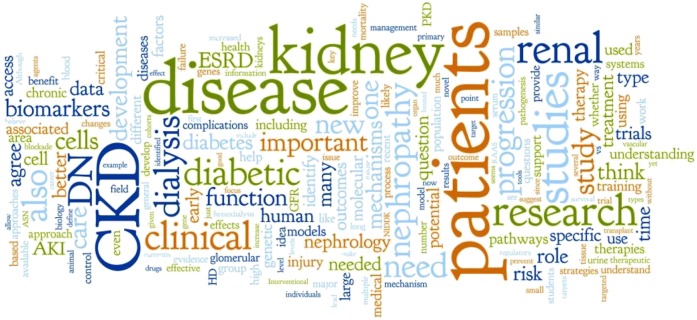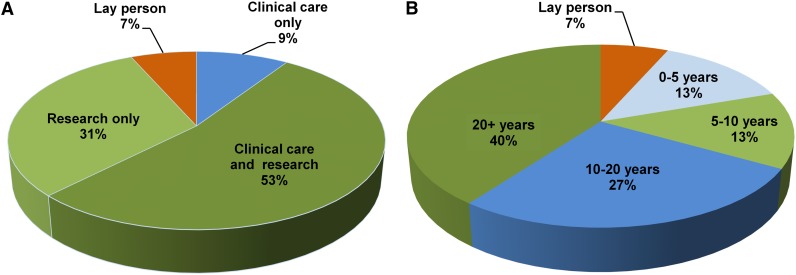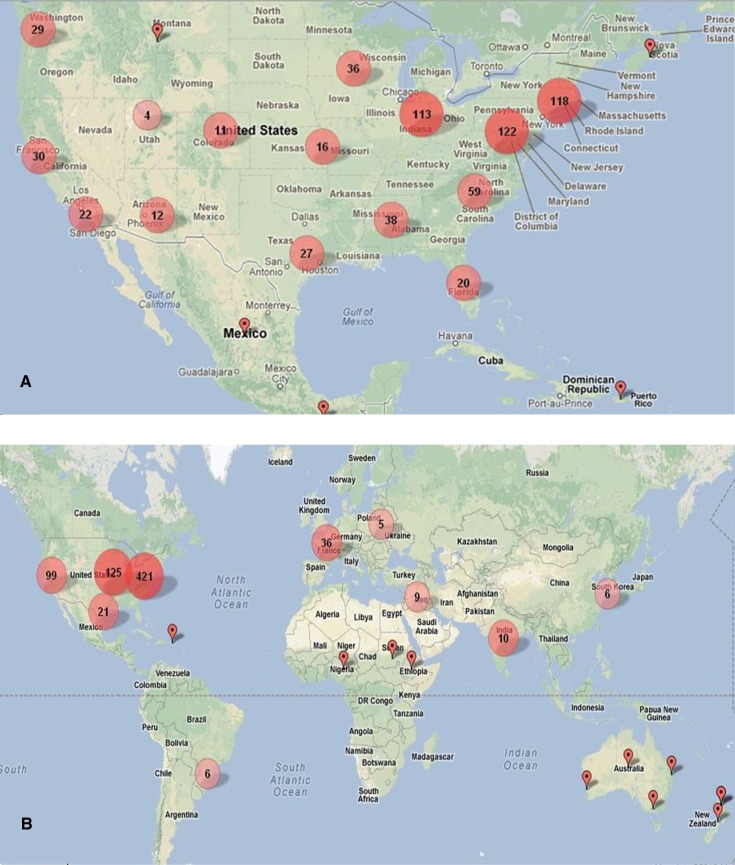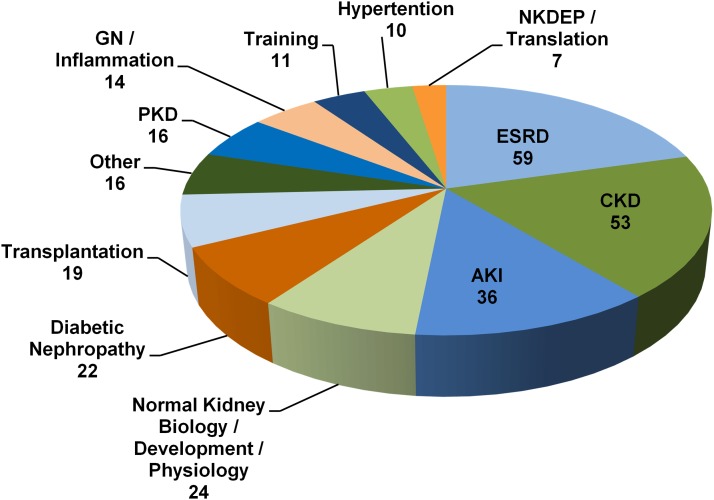Summary
The National Institute of Diabetes and Digestive and Kidney Diseases (NIDDK) asked the scientific community to formulate and prioritize research objectives to improve understanding of kidney function and disease. The Kidney Research National Dialogue welcomed all interested parties to submit, discuss, and prioritize ideas via an interactive website. More than 1600 participants posted approximately 300 ideas and assigned them to 12 topic areas (AKI, CKD, diabetic nephropathy, National Kidney Disease Education Program/translation, ESRD/dialysis, GN/inflammation, hypertension, normal biology/development/physiology, polycystic kidney disease, training, transplantation, other). This commentary provides an overview of the NIDDK’s first experience with web-based strategic planning and addresses the broader issues of open access and cloud-sourcing technologies to capture input from a large, heterogeneous group of contributors. Discussions and findings for each topic will be published as separate, forthcoming commentaries. A final commentary will present cross-cutting themes and concluding remarks. The hope is that this series of commentaries constitutes a cohesive, integrated vision of future research opportunities to be pursued by the kidney research community and supported by the NIDDK.
The Kidney Research National Dialogue (KRND) seeks to identify critically important questions or objectives in kidney research and facilitate community-wide discussions and strategic planning. The results of these efforts will be presented as a series of commentaries in CJASN this year. This commentary provides an overview of the National Institute of Diabetes and Digestive and Kidney Disease (NIDDK)’s first exploration into strategic planning via web-based social media and cloud-sourcing technologies. The contents of the KRND are posted on the NIDDK website (http://www2.niddk.nih.gov/KUH/KUHHome/KRND.htm), and comments about scientific issues or the KRND process itself are encouraged.
The KRND originated from a desire to reach out to all people with a stake in kidney research. Historically, strategic planning meetings are gatherings of motivated individuals at a common site where invited participants devote their undivided attention to a focused exercise. However, the very nature of these meetings limits the number (and range of expertise) of participants and time available for discussion. Therefore, input from these necessarily small groups can be selective, allowing for bias and parochial approaches. Social networking technologies address some of these limitations in that they allow for the inclusion of a vast number of people in a dynamic, open environment.
The KRND website was designed to provide an accessible, ongoing resource for the kidney community where participants could submit their critical questions or objectives, comment on others’ postings, and express their enthusiasm for a research question through informal voting. Voting was anonymous, without an attempt to reach consensus. Participation was encouraged through direct email invitations and online advertising. The KRND was launched in November 2010 and is continuing. Initially, we invited 1080 individuals, 25% of whom visited the site and registered. An additional 483 people registered directly on the website. Most registrants identified themselves as researchers, more than half indicated that they saw patients, and a few identified themselves as lay people (Figure 1A). All career stages were represented among the researchers and clinicians (Figure 1B), with the majority of registrants reporting >10 years in research or clinical practice. Figure 2 maps the number of registrants throughout the United States and six continents. Of all registrants, 55% actively participated through posting, commenting, and/or voting.
Figure 1.
Characteristic of Kidney Research National Dialogue registrants. (A) Percentage of registrants conducting research and providing clinical care and (B) registrants’ years in research or clinical practice.
Figure 2.
Distribution of Kidney Research National Dialogue registrants. (A) United States. (B) Worldwide. Geo-mapping of registrants' institution was performed using batchgeo software. Each marker shows the number of registrants per region (dot = 1). On the world map, North American registrants (including those from Canada and Mexico) are distributed in four regions.
Participants assigned their submitted postings to 1 of 12 topics: AKI, CKD, diabetic nephropathy, National Kidney Disease Education Program/translation, ESRD/dialysis, GN/inflammation, hypertension, normal biology/development/physiology, polycystic kidney disease, training, transplantation, and other. All topic areas received postings (Figure 3), with most directed toward ESRD (59 posts) and CKD (53 posts). A total of 414 participants posted an idea or left a comment, and more than 1000 votes were cast. There were 287 unique posts and 497 comments, represented graphically as a “word cloud” in Figure 4. Each post generated 0–15 comments, with an average of 2 comments per post. The post receiving the most discussion (i.e., the most comments) was “Recruiting the Next Generation of Nephrologists.”
Figure 3.
Number of posts per scientific topic. NKDEP, National Kidney Disease Education Program; PKD, polycystic kidney disease.
Figure 4.

Word cloud representing the relative weighting of the dialogue.
Participants were allotted the same number of informal votes to anonymously express their enthusiasm for a research question; they were able to redistribute their allotted votes as the KRND progressed. Votes were cast for two thirds of the posts, and there was a clear distinction between the front runners and the remaining posts. The research objective receiving the most votes was “Alkali Therapy to Slow Down Progression of CKD,” followed by understanding “Development and Regeneration” and using “Integrated System Biology to Define Renal Disease.” Participants could follow the changing content of the KRND and voting through searchable keyword tags, weekly newsletters, and real-time updates.
The KRND website was moderated by NIDDK staff and invited external scientists to ensure the appropriateness of each post to its topic area and facilitate discussion. Overall, discussions were collegial, without inappropriate entries, despite open access. Promotion and outreach were critical; the NIDDK was fortunate to have support from the American Society of Nephrology and a network of invited external moderators and nephrology division directors at several academic institutions.
The open dialogue used in the KRND was successful in generating numerous posts and comments from a large, heterogeneous group of stakeholders. However, as activity progressed, it became clear that we needed to review and further refine the content to achieve our strategic planning goals. This is not easily conducted within the confines of the social media site; therefore, the original intent to manage the entire KRND through web-based social networking was modified to establish a hybrid approach: a broad, open dialogue (phase I, described above) followed by topic-specific discussions by individual working groups (phase II). Planning efforts for phase II began in late 2011, and 12 working groups, each consisting of 8–10 recognized experts, are now in various stages of development. NIDDK staff manages the working groups and provides editorial guidance. The working groups are designed to provide dedicated, focused attention to specific topics. In addition, each working group’s operations are tailored to address the unique complexities of its research questions. The modes of operation range from telephone conference calls supplemented by email exchanges to the use of a dedicated interactive website. Each working group is charged with developing a conceptual model and final prioritized recommendations, which together will provide the content of the CJASN commentaries.
Having completed phase I of the KRND, the NIDDK is evaluating the use of social media technology to obtain comments from a broad-based group of stakeholders. From our experience, the use of social media technology has pros and cons. In terms of recruitment, the real-time format of web-based social networking lends itself to broad participation by individuals who might not have time to travel to a meeting site. On the other hand, it is difficult to compete for the focused attention of participants over a longer time span, especially when multiple visitations to the site are needed to maintain the momentum of discussions and voting. Also, there were concerns at the outset that participants might be reluctant to submit their best ideas to potential competitors in an open forum (although similar concerns may occur within any meeting format). With the ever-increasing use of the Internet and the availability of social networking tools within the scientific research community, positions on networking and sharing ideas via these means seem to be changing. Table 1 compares using web-based technologies versus a traditional workshop.
Table 1.
Advantages of traditional strategic planning workshop versus Web-based discussions
| Strategic Planning Efforts | Feature | Advantage |
|---|---|---|
| Traditional workshop | Cloistered | Undivided attention to focus on specific questions |
| Fixed end date/time | Maintenance of motivation and momentum | |
| Face-to-face discussions | Enhanced focus | |
| Web-based discussion | Open access | Access to a vast pool of participants and expertise |
| Extended timeframe | More time for generation of ideas and discussion | |
| No travel requirements | More cost-effective (time and effort) for participants and organizers |
On the basis of the KRND experience, the open-access format and cloud-sourcing technology can capture a considerable amount of input from a large, heterogeneous group of contributors. Time and effort required by participants and staff have been minimal compared with the participant recruitment and travel costs of a large face-to-face meeting (or a series of smaller, topic-specific meetings). However, a web-based, open-access format may not be well suited to the necessary focusing and refinement of the information. Hence, our switch to the hybrid model described above was seen as an effective compromise. Two other National Institutes of Health–supported online strategic planning efforts—the National Cancer Institute’s “Provocative Questions” Project (http://provocativequestions.nci.nih.gov/) and the National Institute of Environmental Health Sciences’ “Visionary Ideas” (http://www.niehs.nih.gov/about/strategicplan/visionary-ideas/)—were initiated within months of the KRND. Each of these activities designed its own specific format to meet its goals.
In summary, an open, networking approach can facilitate the sharing of ideas. The NIDDK is pleased to share our experience in this area. The critical research questions and objectives generated through phase I have provided content for further refinement through phase II. This is a work in progress, and the upcoming commentaries from the working groups will reflect our evolving experiences to identify critical questions, objectives, and ideas within each topic area. The final commentary in this series will focus on themes that cut across the complex and diverse areas of kidney research, as well as concluding remarks on the KRND process. We hope that together this series of commentaries will constitute a cohesive, integrated vision of future research opportunities to be pursued by the kidney research community and supported by the NIDDK through workshops and initiatives. Your continued scientific input and discussion, and comments on the KRND process itself, are invited (see (http://www2.niddk.nih.gov/KUH/KUHHome/KRND.htm for more details).
Disclosures
None.
Acknowledgments
Kidney Research National Dialogue Editorial Board members: Emily G. Duggan, Robert Hammond, Christian J. Ketchum, David L. Miller, Krystyna E. Rys-Sikora, and Robert A. Star
Footnotes
Published online ahead of print. Publication date available at www.cjasn.org.





